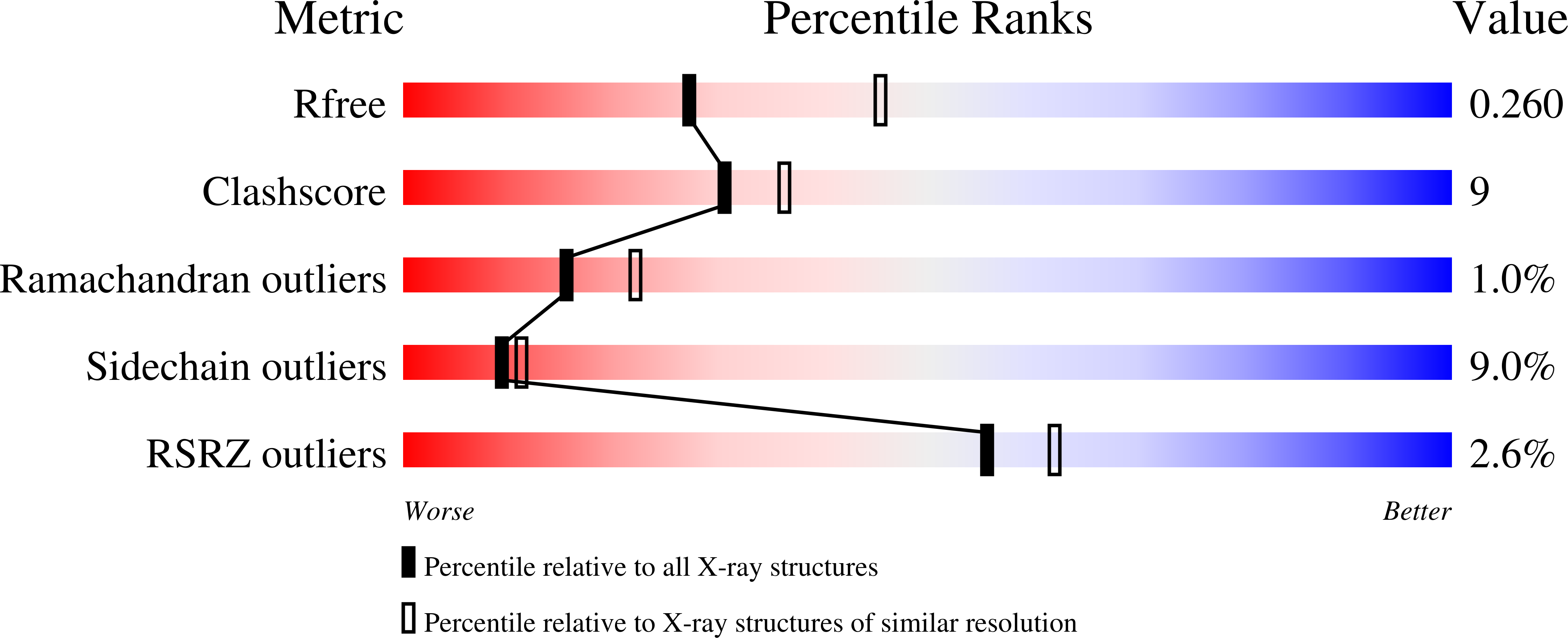Crystal structure of the gamma-glutamyltranspeptidase precursor protein from Escherichia coli. Structural changes upon autocatalytic processing and implications for the maturation mechanism
Okada, T., Suzuki, H., Wada, K., Kumagai, H., Fukuyama, K.(2007) J Biol Chem 282: 2433-2439
- PubMed: 17135273
- DOI: https://doi.org/10.1074/jbc.M607490200
- Primary Citation of Related Structures:
2E0W, 2E0X, 2E0Y - PubMed Abstract:
Gamma-glutamyltranspeptidase (GGT) is an extracellular enzyme that plays a key role in glutathione metabolism. The mature GGT is a heterodimer consisting of L- and S-subunits that is generated by posttranslational cleavage of the peptide bond between Gln-390 and Thr-391 in the precursor protein. Thr-391, which becomes the N-terminal residue of the S-subunit, acts as the active residue in the catalytic reaction. The crystal structure of a mutant GGT, T391A, that is unable to undergo autocatalytic processing, has been determined at 2.55-A resolution. Structural comparison of the precursor protein and mature GGT demonstrates that the structures of the core regions in the two proteins are unchanged, but marked differences are found near the active site. In particular, in the precursor, the segment corresponding to the C-terminal region of the L-subunit occupies the site where the loop (residues 438-449) forms the lid of the gamma-glutamyl group-binding pocket in the mature GGT. This result demonstrates that, upon cleavage of the N-terminal peptide bond of Thr-391, the newly produced C terminus (residues 375-390) flips out, allowing the 438-449 segment to form the gamma-glutamyl group-binding pocket. The electron density map for the T391A protein also identified a water molecule near the carbonyl carbon atom of Gln-390. The spatial arrangement around the water and Thr-391 relative to the scissile peptide bond appears suitable for the initiation of autocatalytic processing, as in other members of the N-terminal nucleophile hydrolase superfamily.
Organizational Affiliation:
Department of Biological Sciences, Graduate School of Science, Osaka University, Toyonaka, Osaka 560-0043, Japan.














